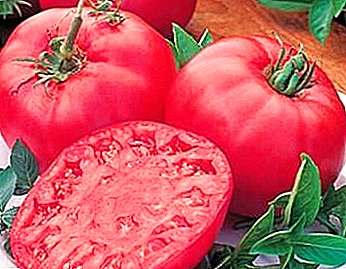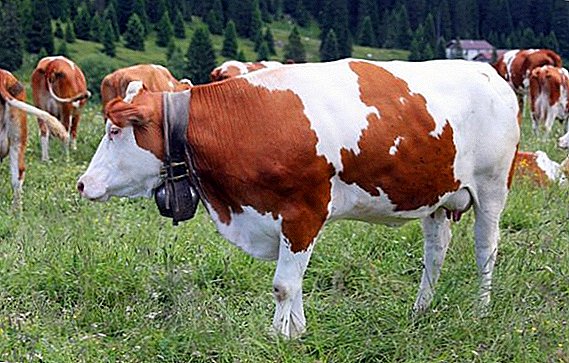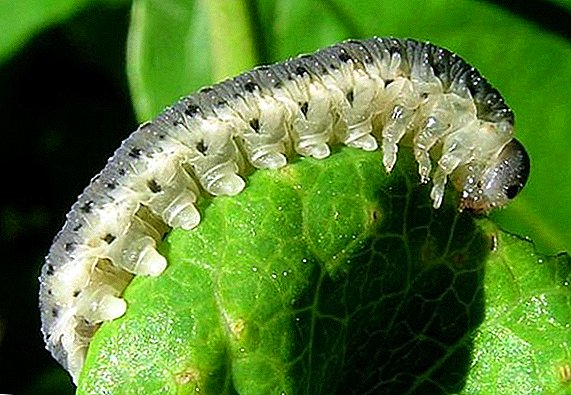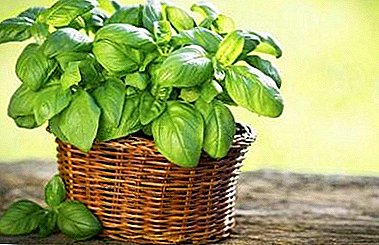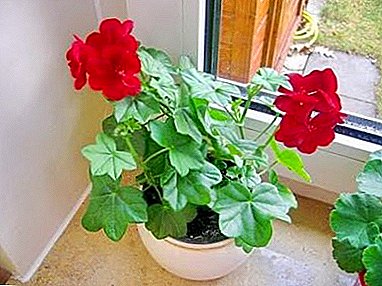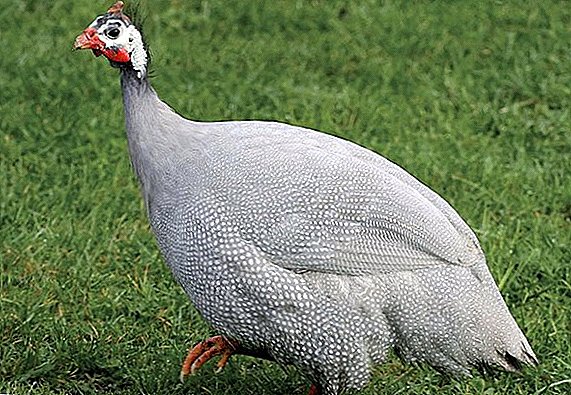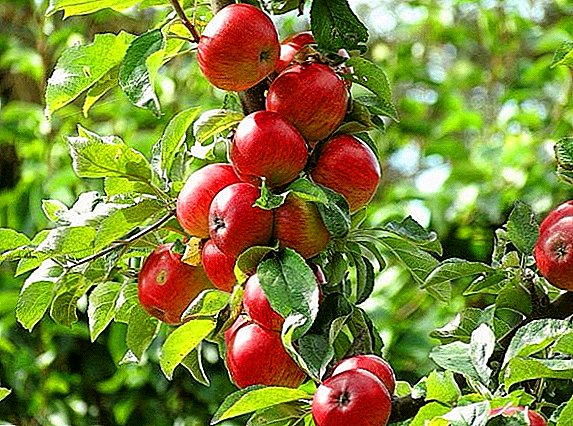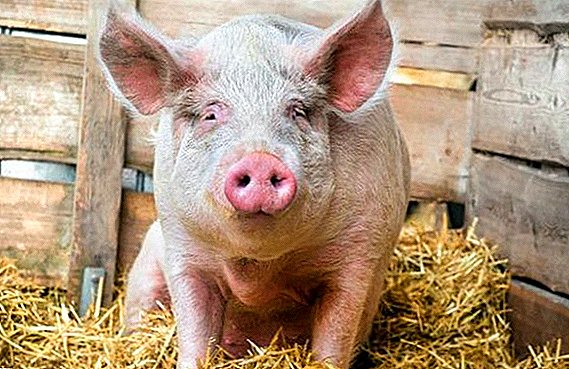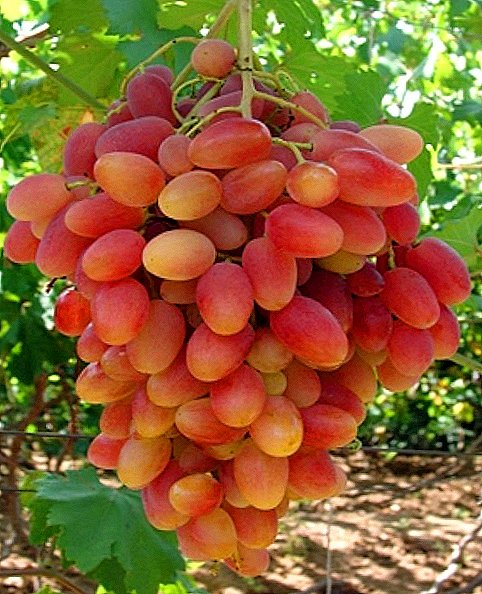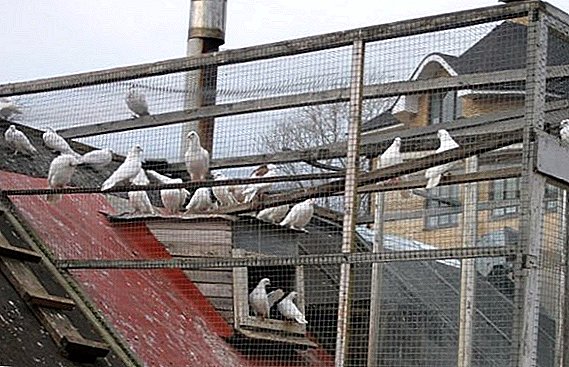 Pigeons have been tamed by people since ancient times for different purposes. These beautiful birds have their admirers now. Today, there are several groups of domestic pigeons. We will get acquainted with the varieties of these birds and the peculiarities of keeping them at home.
Pigeons have been tamed by people since ancient times for different purposes. These beautiful birds have their admirers now. Today, there are several groups of domestic pigeons. We will get acquainted with the varieties of these birds and the peculiarities of keeping them at home.
The best breeds for home breeding
Today, only in Russia there are about 200 breeds of domestic breeding pigeons, and there are many more of them in the whole world. Consider the breed of the main species of domestic pigeons.
Did you know? In ancient times, pigeons willingly consumed the meat of the inhabitants of Egypt, Greece, the Roman Empire. The works of the ancient Roman scientist Varron, which speak of imperial dovecotes with a population of 5,000 birds raised for the needs of the aristocracy, have reached our time. Nowadays, these poultry are the most popular in culinary Hungary, the USA and France.
Meat
Pigeon meat is dietary and is considered a delicacy. These birds are ready for slaughter at the age of one month. Before slaughtering, they add seeds of spicy herbs (dill, anise, cumin) to the diet and water with salted milk to improve the taste of meat. Meat breeds in 1-1,5 months weigh 700 grams, although in adulthood they can reach a weight of more than a kilogram. But the meat of young individuals is more tender and soft. In addition, at this age, young animals still do not know how to fly.
There are about 50 breeds of pigeons in the meat direction. We list the most common ones:
- king
- Strasser;
- teksan;
- Roman giants;
- Carnot;
- monden;
- Prachensky kanik.







Read also about breeding pigeons.
Sports
Previously, sports pigeons were called postal. Currently, the pigeon post has become obsolete, but with the participation of these breeds began to be held competitions at different distances. Such pigeons can fly very quickly (up to 80 km per hour) and always find their way home, flying significant distances. They can be trained to make the way to the addressee and go back.
The following breeds of sports pigeons are most popular:
- English quarry;
- Flanders (Brussels);
- lyuttih sports;
- Russian postal;
- white Ostankino;
- Czech.




Flight
Pigeons can fly to different heights for a long time and return to their homes after a beautiful long flight. Among them are groups with their own special styles of flight. Some flight breeds are very decorative.
The following breeds of flying pigeons are common:
- Gdansk tourist;
- Nikolaev;
- Kursk;
- tippler;
- Andijan;
- Armavir white-headed;
- Berlin short-eyed turman;
- German monk;
- Oriental Roller;
- Berlin dlinnooklyuvy turman.








There are fighting breeds of pigeons, which got their name for the loud sound battle with their wings, which they emit in flight. This is typical of such breeds as the Baku, Takla, Uzbek, Agaran, Kasan.
Decorative
Pigeons are beautiful decorative birds. Among them, many breeds are bred, possessing outstanding appearance and a calm disposition. There are a lot of decorative rocks, but the most popular of them are the following:
- Barb;
- Brno blows;
- peacock;
- marchenero;
- Egyptian swift;
- Bohemian Cosmonogue;
- Saxon priest;
- curly.







Pigeon house
It is necessary to equip the dovecote considering the number of birds living in it. It is undesirable to build it near power lines or near high-rise buildings.
Learn more about building a dovecote.
Nests and nests
Each inhabitant of the dovecote should have a place where it would be possible to restore its strength. These birds are resting on the perch. 30 cm perch is assigned to each individual. They are recommended to be made from smoothly curled poles of wood with a diameter of about 3 cm or bars with a cross section of 2x4 cm and painted. Usually they are fixed at a distance of 30-40 cm from the top of the dovecote. They should be positioned so that the pigeons do not interfere with each other. For specimens with strong plumage on the legs and wings, the presence of such seats is necessary so that they do not spoil their feathers.  For breeding birds do special shelves with nests. They can be mounted in several rows. It is most rational to equip such shelves with roosts and arrange them so that they serve both for fallowing and for the nest. For small breeds, they are made in sizes 30x30 cm and 30 cm high, for large ones - 70x40 cm and 40 cm high. Borders 34 cm wide and 2 cm thick fix to the walls between the shelves, retreating 1.5-2 cm from the shelf itself. They will be used by birds as a perch. To excrement from birds living on the upper floors, do not fall to the lower inhabitants, each shelf for a nest or perch is made wider by 5 cm wider.
For breeding birds do special shelves with nests. They can be mounted in several rows. It is most rational to equip such shelves with roosts and arrange them so that they serve both for fallowing and for the nest. For small breeds, they are made in sizes 30x30 cm and 30 cm high, for large ones - 70x40 cm and 40 cm high. Borders 34 cm wide and 2 cm thick fix to the walls between the shelves, retreating 1.5-2 cm from the shelf itself. They will be used by birds as a perch. To excrement from birds living on the upper floors, do not fall to the lower inhabitants, each shelf for a nest or perch is made wider by 5 cm wider.  Gypsum nests In the nesting shelves place nests with a width of 20-25 cm and a height of 6-7 cm. Usually use rectangular plywood boxes or gypsum round nests, their bottom is lined with sawdust or straw. The number of nests is determined by the number of females.
Gypsum nests In the nesting shelves place nests with a width of 20-25 cm and a height of 6-7 cm. Usually use rectangular plywood boxes or gypsum round nests, their bottom is lined with sawdust or straw. The number of nests is determined by the number of females.
Did you know? Pigeons are loyal and create couples for life. Both females and males are good parents - they incubate their offspring in turn and feed up together. A pigeon who has lost her mate is hard to accept another male.
Feeders and drinkers
The number and size of feeders and drinkers depend on the number of pigeons. They should be easy to use, easy to clean and fill. In order for birds not to contaminate feed and water, it is best to use devices into which only the head of the bird would slip. If desired, they can be made by hand. It is most convenient to use auto-drinkers and feeders, especially when raising young stock of meat species. 
Baths
In warm times and during the feathers change, birds like to take baths. For their reception of water procedures should be placed in the dovecot tub with water. You can purchase special baths in specialized stores, and you can use containers in which the height of the sides is 4-8 cm.
In the cold, the bath for taking water procedures to birds is set once a week. During the nesting period - twice a day. After bathing, the bath with already polluted water is removed, as the birds begin to drink it.
Lettok
As a rule, in the dovecote do two years. Their size and location depend on the breeds used. For flying and sports pigeons, they are made at a height of about a meter from the floor, and for decorative and meat birds they are placed 15-20 cm from the floor. The usual width of the notch is 10-20 cm with a height of 10 to 25 cm.
Read also about the life expectancy of pigeons in the wild and at home.
What else to take care
For the normal life of pigeons is important microclimate in the loft. Illumination, temperature, fresh air flow have a great influence on the development, reproduction and health of the bird. 
Lighting
The luminosity of dovecote is an important factor. So, too short daylight hours slows the puberty of the young, but contributes to the development in the physical plane. Bright lighting (red and orange tones) also slows puberty. The recommended light day for pigeons is approximately 13 hours. To control the light in the housing of birds should be equipped with electric lighting. In order for birds to get enough sunlight, in pigeon-houses it is advisable to make a window on the south or southeast side.
Learn how to find out the sex of a pigeon and how the pigeons mate.
Temperature
Another important condition of the content is the temperature of the room. It has a strong influence on the health and reproduction, as well as the development of the young.
The optimal temperature conditions for dovecote are as follows:
- in winter - 5-7 ° C;
- during the summer period - no more than 20 ° C;
- air humidity - 65-70%.
During the cold period, the temperature in the dovecot should not be below the -25 ° C mark. The summer heat also has a bad effect on these birds, since they do not have sweat glands, and the evaporation of excess moisture is produced during breathing, so the temperature over +25 ° C is undesirable for them.  If pigeons have decreased activity, feathers are disheveled, they have gotten together in a group and are sitting, then this indicates that they have frozen and want to warm up somehow. In this case, you need to warm the dovecote and provide the birds with warm water for drinking. And if pigeons breathe more quickly, their wings are spread apart in different directions, they drink plenty of water, then it means that they are very hot. In this case, it is necessary to strengthen the ventilation of the room, increase the humidity in the dovecote, putting containers with cool water, more often to change the water for drinking. In the summer heat you can not let pigeons fly in flight - this is too much for them.
If pigeons have decreased activity, feathers are disheveled, they have gotten together in a group and are sitting, then this indicates that they have frozen and want to warm up somehow. In this case, you need to warm the dovecote and provide the birds with warm water for drinking. And if pigeons breathe more quickly, their wings are spread apart in different directions, they drink plenty of water, then it means that they are very hot. In this case, it is necessary to strengthen the ventilation of the room, increase the humidity in the dovecote, putting containers with cool water, more often to change the water for drinking. In the summer heat you can not let pigeons fly in flight - this is too much for them.
In the spring, when it goes nestling process, it is necessary to avoid severely low temperatures in the birds' dwellings in order to prevent chilling of chicks, as this will adversely affect their health and may end up badly.
Find out what the little pigeon feeds, as well as where the chicks of the city pigeons are hiding.
Ventilation
In the loft should be a ventilation system has been set up, but no drafts should be allowed. For ventilation at a distance of 10-15 cm from the floor make a hole for air flow, which is closed with a grill. Also make an opening for the hood near the ceiling. Ventilation windows must be equipped with tightly closed doors or valves that will be used in cold weather. It is possible to equip not only natural, but also forced ventilation of the room. Well-adjusted ventilation prevents mold, dampness and infections in the loft. 
Litter
In the loft it is recommended to make litter on the floor. The flooring layer must be at least 5 cm. This litter is made from sawdust wood, hay, straw, thin twigs, dry peat and or large format sand. It makes cleaning the dovecote much easier. It must also be done in the nest during the mating and incubation of chicks.
It is necessary to monitor the cleanliness of the litter well. Twice a year they make its complete replacement during the spring and autumn disinfection of the premises. Be sure to change the damp and rotted litter, so as not to provoke various infections.
Did you know? The highest cost of a pigeon was 41 thousand pounds. It was a postal bird sold in 1986.
Aviary for walking
For domestic pigeons you need to equip the enclosure for walking. It is necessary for birds of meat and decorative direction. Walking allows pigeons to gradually get used to the external environment, to take sunbaths, take a walk through the fresh air. It is set up right on the ground or on props of a certain height. To organize it, you can also use the roof of the pigeon house or make it in a suspended version.  At arrangement of the open-air cage it is necessary to adhere to the following requirements:
At arrangement of the open-air cage it is necessary to adhere to the following requirements:
- the minimum size of the enclosure for walking - 5x3 meters;
- the height of the enclosure corresponds to the height of the pigeon house;
- 1 individual must account for 0.5 square meters. m walking;
- the enclosure should be made covered and sturdy so that predators do not penetrate it;
- for the arrangement they use a grid with fractions up to 5 cm to avoid visiting street birds, which can be carriers of various infections;
- the doors are double so that the birds cannot fly;
- To maintain cleanliness, the floor is recommended to be made of concrete or cement. If the floor is earthen, then it is recommended to update it periodically approximately on the spade bayonet, and to pour sand on top. To prevent predators from digging, they dig a trench around the perimeter and cover it with earth with broken glass;
- from the north from the cold wind aviary protect plywood or plastic sheet.
For the arrangement of the enclosure inside you need to place:
- feeders;
- drinking bowls;
- bath tubs;
- containers with greens.
An open-air cage is recommended to do on the south or southeast side for the best sunbathing by pigeons during walks. 
Dove's disinfection
To prevent the appearance of various diseases and parasites, it is important to regularly disinfect the pigeon house. When choosing chemicals, you need to take into account that they do not harm the health of birds, they were not toxic. Disinfection is done once a month, and when an infection or any parasites is detected, unplanned measures are taken to disinfect the birds' housing.
Monthly disinfection of the pigeon house is carried out according to the following rules:
- completely remove litter;
- soap solution thoroughly wash perches, nests and walls;
- wash troughs, drinkers, baths thoroughly;
- a blowtorch is used for disinfection;
- during such events, pigeons are removed from the pigeon house;
- at the end of the procedure, air the room well.
When an infection is detected after wet cleaning, disinfection is performed with a special solution from a certain infection or virus of the entire room, inventory. In specialized stores, you can purchase special aerosol disinfectors, which also process food, drink, air, and feather coating of birds. 
Additional inventory
For the maintenance of pigeons, as well as to maintain order and cleanliness in the house are purchased the following inventory items:
- sieve (sift sand);
- mortar (for crushing mineral components);
- canister (for drinking water);
- scoop;
- broom;
- scraper;
- basket for litter;
- bucket;
- rake large and small;
- items for carrying pigeons.
In the loft there must be a first-aid kit with such medicines and devices: tweezers, syringe (1-2 cc.), Scalpel, scissors, bandages, plaster, silk threads, cotton wool, alcohol, manganese, chloramphenicol, vitamins, boric acid, green, permanganate. potassium and so on.
It is interesting to read about the various types of stately pigeons.
The maintenance of pigeons in the winter
In winter, when keeping pigeons, it is recommended to perform following requirements:
- temperature in the dovecap should not be less than + 10 ... +15 ° С;
- The light day should be about 13 hours, so in the winter time the electric lighting in the dovecote will not be superfluous. A single bulb is enough;
- Nests should preferably be placed above the ceiling, and boxes for arranging nests should be deeper - about 35-40 cm;
- ventilation in the dovecote is organized on the bottom, so that the air passes along the floor;
- to warm the door, it is recommended to curtain with a warm blanket or polyethylene film;
- to warm the pigeon house from the outside with polystyrene foam plates, and put a vapor barrier film on top. Such a film lets air in one direction and does not let moisture in another direction, it is strong enough and birds will not damage it. As a heater, you can use mineral wool;
- pigeon is used for woodwork in the loft of wood and the loft of metal is warmed with boards from the inside. All joints must be carefully propped so that they do not allow air to pass through;
- the floor is insulated with hay and sawdust.
 It should also adjust the food - include cereals with a high fat content (pumpkin and sunflower seeds, rapeseed, oats, etc.). To compensate for the lack of vitamins during this period, you need to make additives in the form of dried chopped herbs, finely chopped vegetables (carrots, cabbage, lettuce leaves, etc.). It is also possible to purchase fortified pigeon complexes in specialized stores.
It should also adjust the food - include cereals with a high fat content (pumpkin and sunflower seeds, rapeseed, oats, etc.). To compensate for the lack of vitamins during this period, you need to make additives in the form of dried chopped herbs, finely chopped vegetables (carrots, cabbage, lettuce leaves, etc.). It is also possible to purchase fortified pigeon complexes in specialized stores.
Important! To avoid colds, it is better to heat the water for drinking pigeons, and even better to use heated drinkers so that the water does not freeze and is not cold.
What to feed
For their feathered pets should make the right diet. Feeding pigeons carried out twice a day - in the morning and in the evening. You need to feed at certain hours, and even better develop a schedule.
What can
It is necessary to calculate the rate of food intake so that there is no residue from the feed. The average dose per pigeon, depending on the breed, is about 25-35 g, and for heavier meat breeds, 50-65 g. The dosage of feeding varies depending on the state of the pigeon.  For pigeons, the following basic diet is recommended:
For pigeons, the following basic diet is recommended:
- wheat grains - 5%. The allowable range is 5-50%. The rate of wheat is increased in winter, as well as during the rearing of chicks;
- barley kernels - 10%. The allowable range is 5-25%. You can increase the rate during molting and breeding offspring;
- oat kernels - 10%. The allowable range is 5-50%. It is possible to exceed the recommended rate during the breeding period, but be sure to increase the protein food;
- corn - 5%. The allowable range is 5-20%. The increase of this component occurs during the breeding season, as well as during the cold season. But it is worth considering that corn contributes to weight gain;
- millet - 5%. Allowed to change the norm in the range of 5-10%. The increase is recommended for young animals, as well as for sporting pigeons, especially before competitions;
- buckwheat - 5%. Allowed to change the norm in the range of 5-10%. Untreated buckwheat is used as a dietary food to combat obesity in birds;
- peas - 10%. The allowable range was 5-25%. The increase is permissible during the transportation of birds, molting, rearing and breeding of young stock. With obesity should be limited;
- lentils - 5%. The allowable range is 5-25%. Comes as an additional feed;
- sunflower - 5%. The allowable range is 1-10%. This is a very nutritious product, and it comes as an addition to the main feed. It is especially useful to give it in winter and after illness;
- hemp - 1%. The allowable range is 1-3%. It contains a lot of fat, and it is useful to give it during the breeding season;
- carrot - 1%. The allowable range is about 1-3%. Применяют как добавку, содержащую витамины, полезна в любой период для птиц;
- зелёный корм - 1%. Допустимый диапазон - 1-3%. As an additive containing vitamins, it is useful at any time for birds, and especially in winter and during molting;
- sprouts of germinated grains - 0.5%. The allowable range is 0.5-1%. Due to the presence of large amounts of vitamins and minerals, it is especially important to give as an additive during the winter period, as well as during the breeding and molting period;
- feed in granules - 10%. The allowable range is 10-100%. Can be used as the main feed;
- dry fodder yeast - 3%. The allowable range is 3-5%. Due to the high content of B vitamins and protein, it is useful to give them at any time, especially for young animals for weight gain.
As an additive to the main food, potatoes, apples, carrots, as well as greens and grass - lettuce, cabbage, sorrel, alfalfa, nettle, clover, etc. are well suited.
As a mineral supplement, it is useful to give limestone, chalk, meat and bone meal, crushed shells or eggshell with feed.  During the molting period from mid-summer to mid-autumn, experts recommend increasing the protein content in the feed, which helps to update the feather cover. But in this period, in order to reduce the sexual excitability of birds due to the high protein content, wheat must be completely replaced with oats and barley.
During the molting period from mid-summer to mid-autumn, experts recommend increasing the protein content in the feed, which helps to update the feather cover. But in this period, in order to reduce the sexual excitability of birds due to the high protein content, wheat must be completely replaced with oats and barley.
Important! It is very important to choose the right diet for pigeons so that the extra food does not cause weight gain or, conversely, the lack did not lead to exhaustion. Obese female pigeons lay unfertilized testicles, and with exhaustion cannot fatten chicks.
What not
When breeding pigeons, consider the following restrictions when choosing food:
- constantly bakery products do not feed pigeons. They can be used only as an additive to the basic diet. With the regular consumption of such a product in birds, there may be a violation of the gastrointestinal tract, a violation of metabolic processes, bloating, and so on;
- rye. It can cause diarrhea;
- meat products, scraps and waste, as this can cause upset the digestive tract;
- use potatoes only as a food additive, because it cannot fully replace grain;
- a large number of seeds complicates the function of the liver;
- Do not feed spoiled and damp grain.
Video: Secrets of keeping doves
If you decide to have pigeons, then first of all you should decide on the breed and the conditions of its maintenance. You should choose the dovecote and properly equip it, buy the necessary equipment, prepare fodder. It is not recommended to start at once many birds. It is better to start with several pairs and choose no more than three undemanding breeds.


